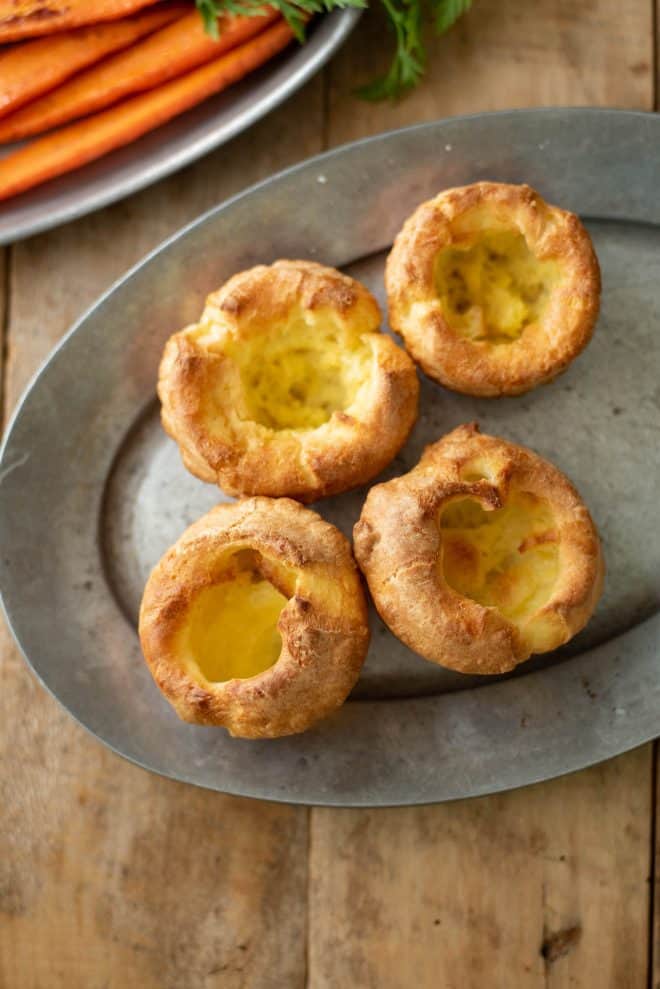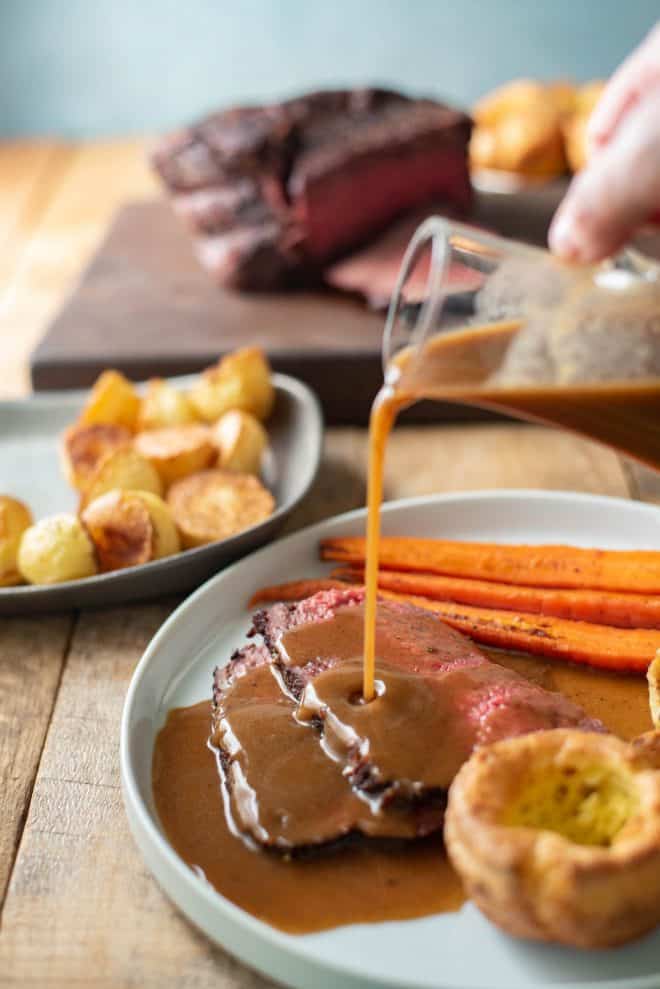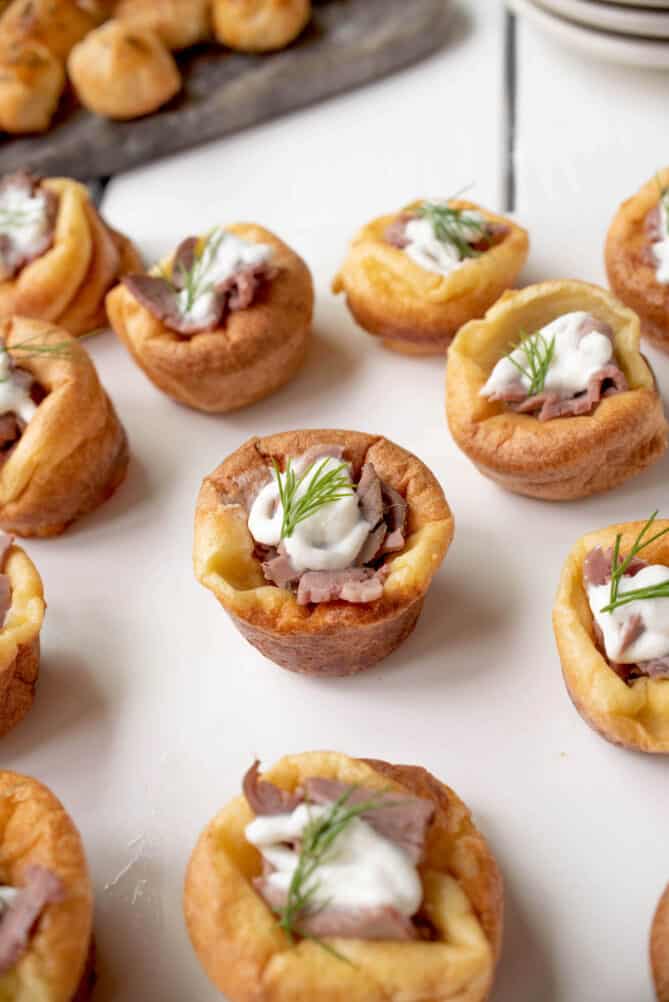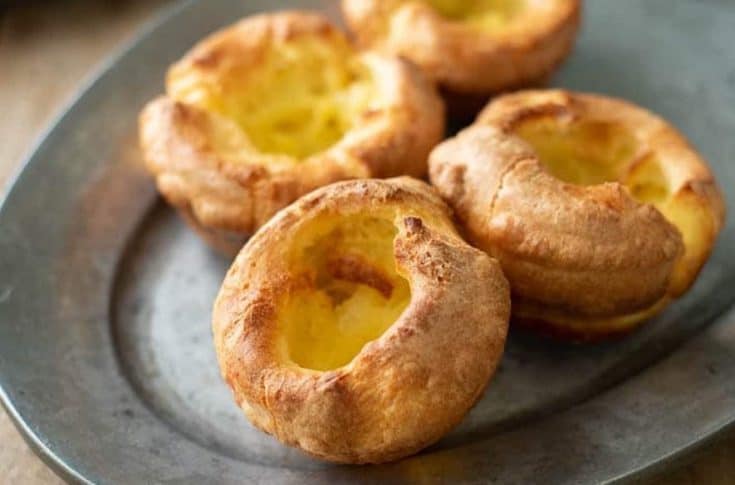It doesn’t come more straightforward than this easy Yorkshire pudding recipe. If you follow all my tips below, you wont get them wrong. Don’t worry too much about the perfect shape as they will be different shapes at the end, this is all part of the charm. It’s more about getting the technique right and them tasting delicious.
What are Yorkshire Puddings?
Yorkies are a staple for every British Sunday dinner. Not actually a pudding at all. They are made from simply egg, flour and milk batter that is then ‘fried’ in the oven in very hot oil (usually beef drippings). This famous side dish is usually served with a roast beef dinner. Yorkshire puddings and popovers are very similar, sharing many ingredients and a delightful puffy texture. However, there are some key differences: Origin:
Yorkshire Pudding Origin: Hailing from England, Yorkshire pudding is a traditional side dish for roast beef dinner. Popover Origin: The origins of popovers are a bit murkier, though some believe they originated in the United States around the late 18th or early 19th century.
Cooking Fat:
Yorkshire Pudding: Traditionally cooked in a lot of hot beef drippings, although vegetable oil can be used as a substitute. Popover: Baked only with a light greasing of butter in the pan.
Shape:
Yorkshire Pudding: Boasts a distinctive, round shape with a round bottom and hole in the center. Popover: More elongated due to the shape of the popover pan.
Serving:
Yorkshire Pudding: Usually served savory with roast beef and gravy. Popover: Can be enjoyed savory or sweet. Savory versions might be served as an appetizer, while sweet popovers might be dusted with powdered sugar or served with jam.
Yorkies are a staple for every British Sunday dinner. Not actually a pudding at all. They are made from simply egg, flour and milk batter that is then ‘fried’ in the oven in very hot oil (usually beef drippings), this famous side dish is usually served with a roast beef dinner.
Yorkshire Pudding Tips and Tricks
For perfect Yorkshire puddings you need to know a few key things for the best results.
The flour:Plain flour/all-purpose flour. Not self-raising flour. Its built-in leavening agent (baking powder) does not will not help the Yorkshire puddings rise faster or higher. The fat: The oil needs to get scorching hot, so choose a fat that can handle the heat. Beef drippings are traditional (and add amazing flavor!), but vegetable oil or lard work well too. Avoid olive oil, as its lower smoke point can lead to burning. The batter: Allow to rest before baking. This gives the gluten in the flour to relax after mixing to ensure light, fluffy puddings. Also, do not bake cold Yorkshire pudding mix. This will cool the oil down too much and they wont immediately start cooking when the batter hits the oil, which is key. Room temperature batter is best. The eggs should also be room temperature when mixing the batter as they incorporate more easily. Use a jug with a spout to pour the batter. This provides better control and prevents drips on the pan that could burn. Do not disturb: Unless there is an emergency, DO NOT open the door before they are done. They will deflate. A great tip is to turn off the oven at the end of baking and leave the temperature to gradually drop before opening the door. Keeping an eye on them (hopefully through a glass oven door) so they don’t burn. The pan: Use the right size pan. In the U.K., a Yorkshire pudding tin is ideal, but a muffin tin works well too.
Yorkshire Pudding Variations
You may have seen large Yorkshire puddings with the roast beef and vegetables served inside. Well now there is also a new street food called Yorkshire Burrito (pictured above) where the roast beef dinner is wrapped up inside a large pudding. I also make mini Yorkshire puddings with roast beef and horseradish sauce for entertaining (pictured below). If you’ve made this Yorkshire Pudding Recipe or any other recipe, please leave a comment below. I love to hear from my readers!








